

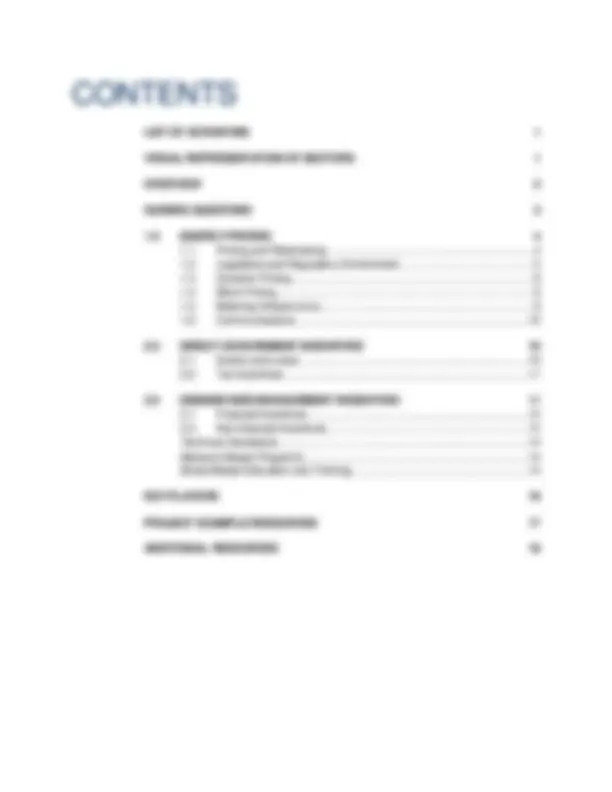
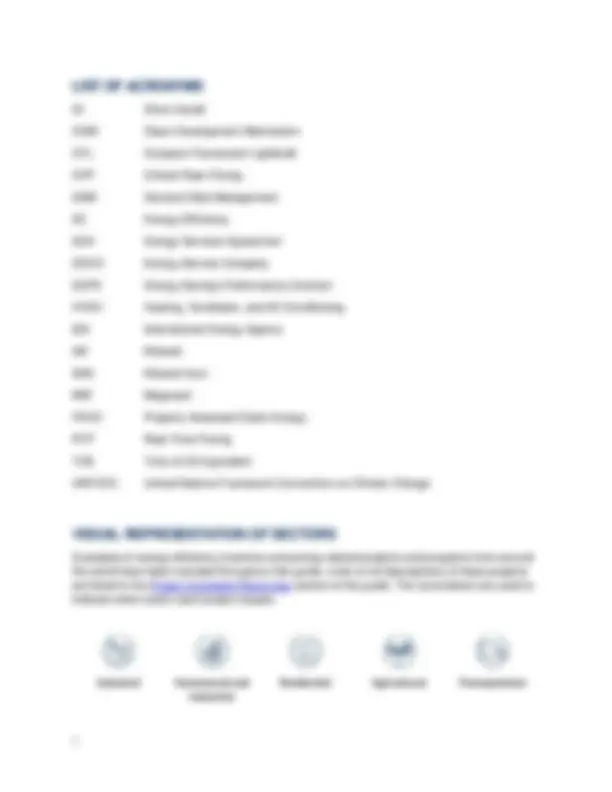
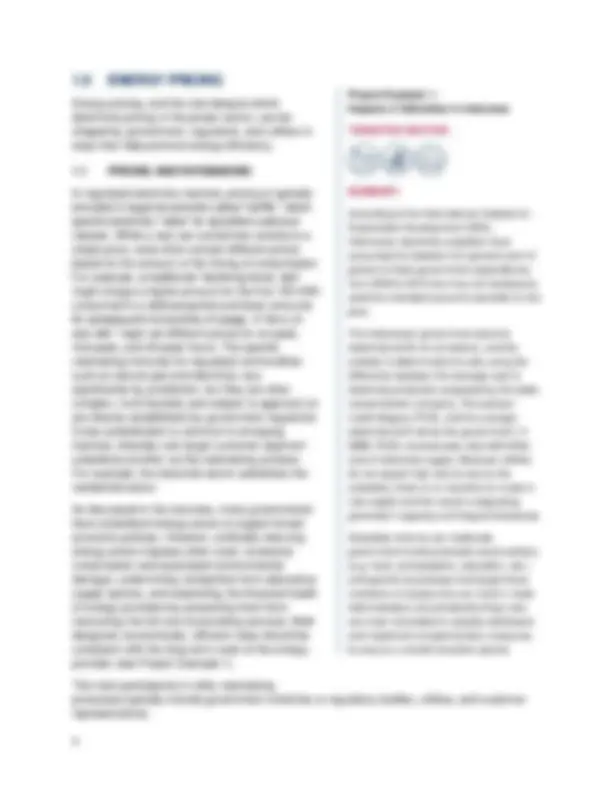
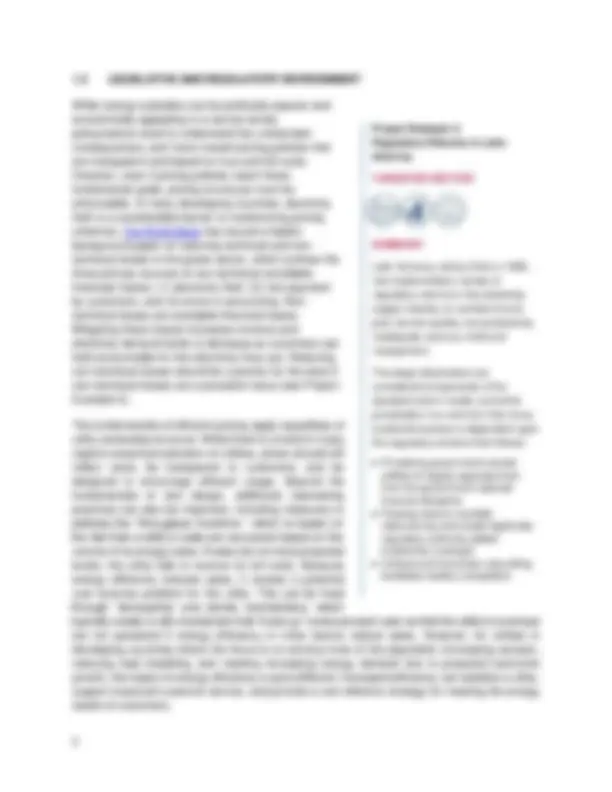
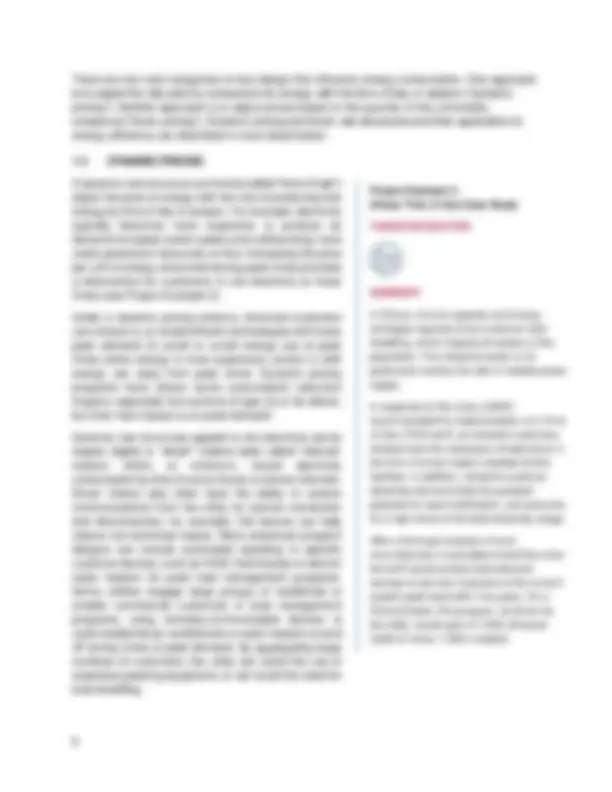
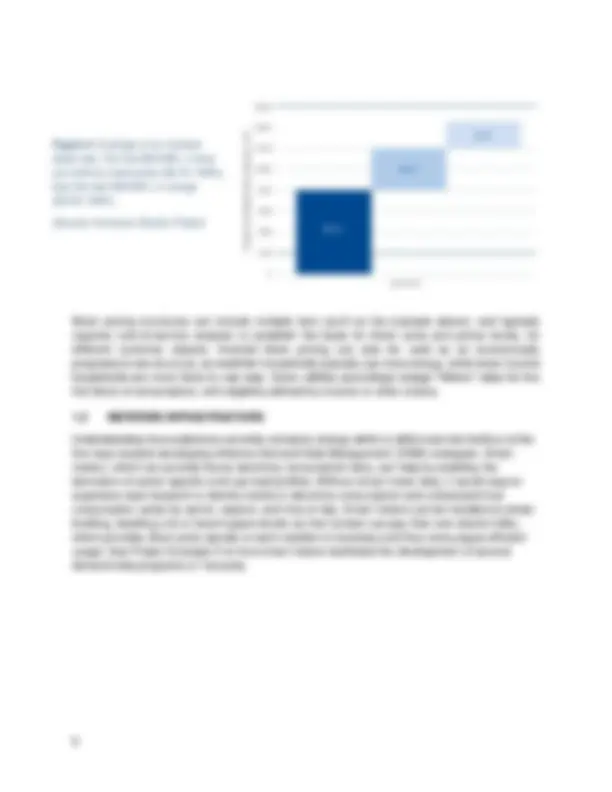
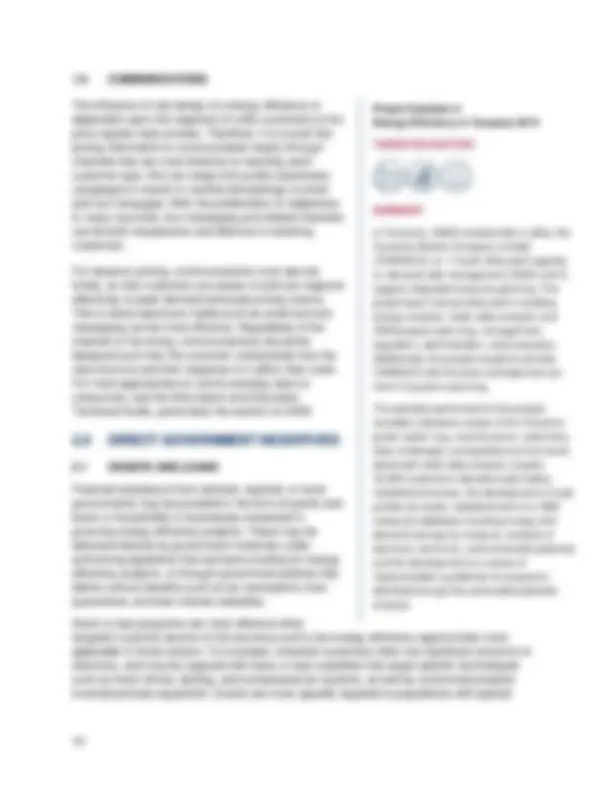
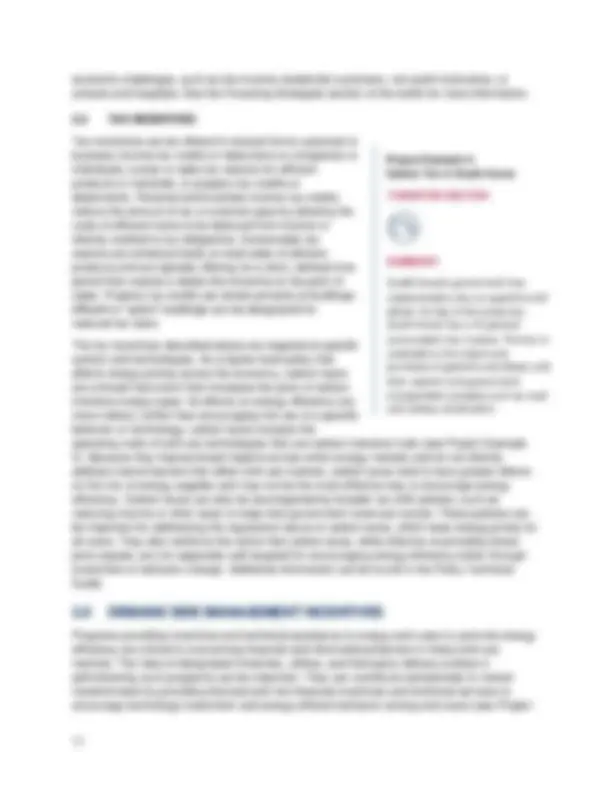
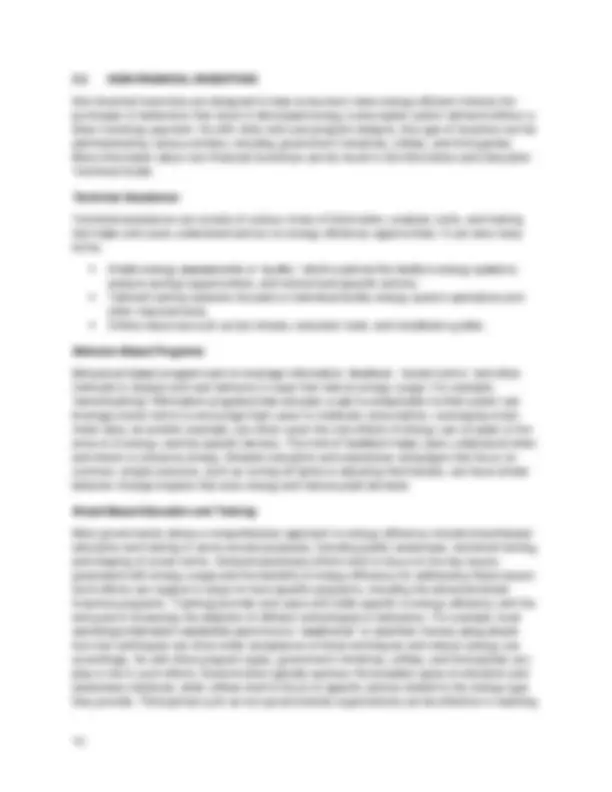

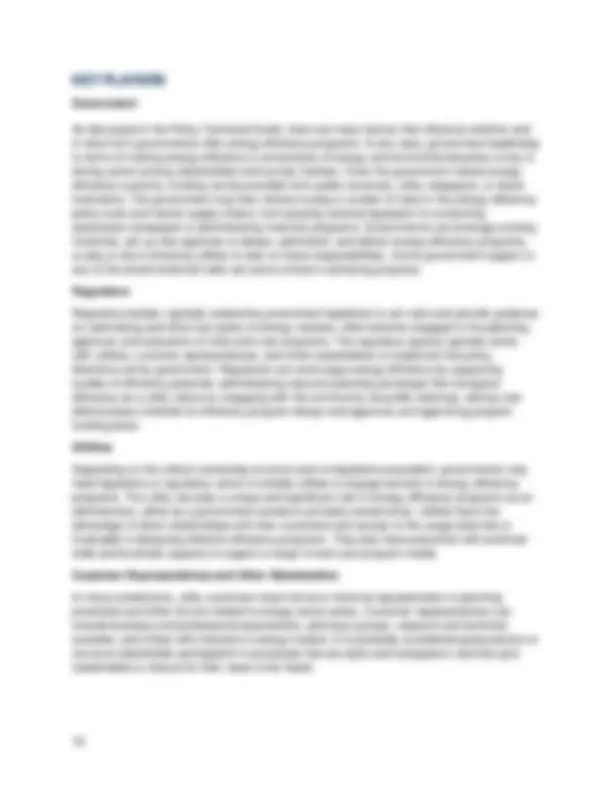
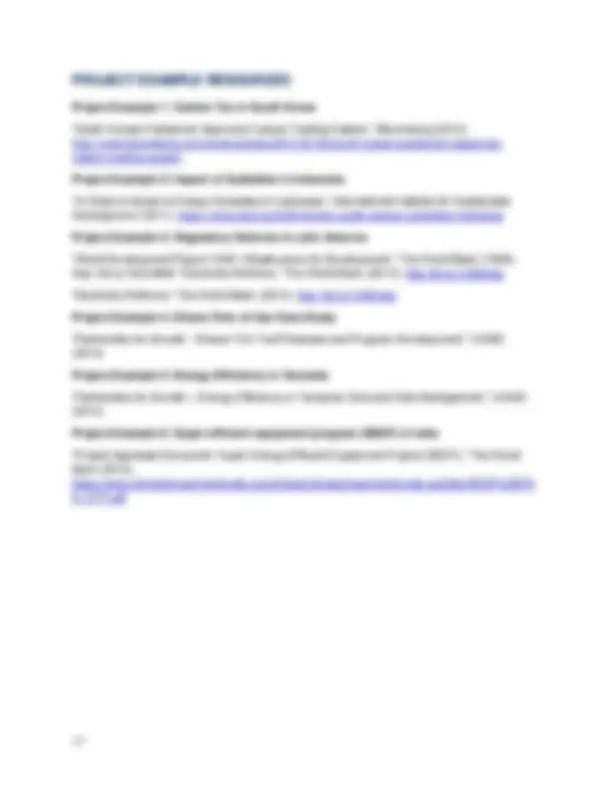
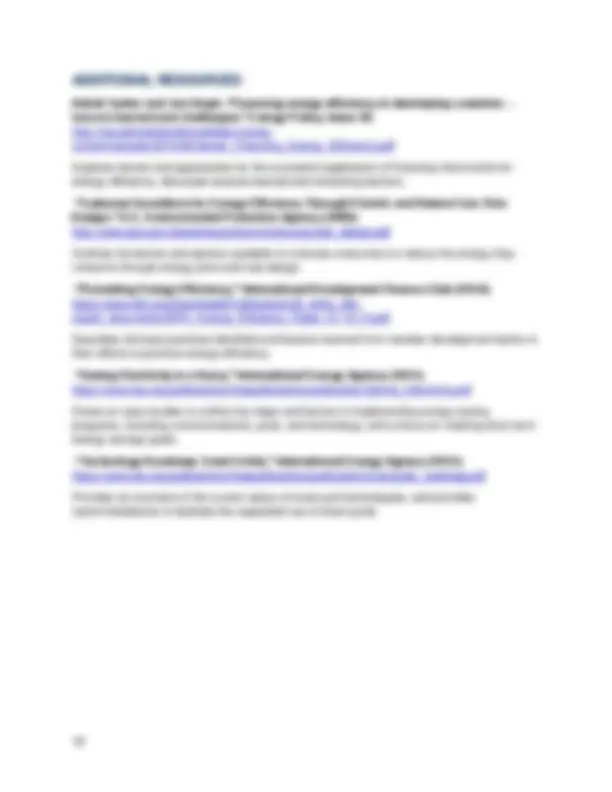


Study with the several resources on Docsity

Earn points by helping other students or get them with a premium plan


Prepare for your exams
Study with the several resources on Docsity

Earn points to download
Earn points by helping other students or get them with a premium plan
Community
Ask the community for help and clear up your study doubts
Discover the best universities in your country according to Docsity users
Free resources
Download our free guides on studying techniques, anxiety management strategies, and thesis advice from Docsity tutors
This guide focuses on energy pricing, especially in electricity markets, and on customer incentives, as two leading policy strategies than can encourage market ...
Typology: Study notes
1 / 22

This page cannot be seen from the preview
Don't miss anything!















DI Direct Install
CDM Clean Development Mechanism
CFL Compact Fluorescent Lightbulb
CPP Critical Peak Pricing
DSM Demand Side Management
EE Energy Efficiency
ESA Energy Services Agreement
ESCO Energy Service Company
ESPC Energy Savings Performance Contract
HVAC Heating, Ventilation, and Air Conditioning
IEA International Energy Agency
kW Kilowatt
kWh Kilowatt-hour
MW Megawatt
PACE Property Assessed Clean Energy
RTP Real Time Pricing
TOE Tons of Oil Equivalent
UNFCCC United Nations Framework Convention on Climate Change
Examples of energy efficiency incentive and pricing-related projects and programs from around the world have been included throughout this guide. Links to full descriptions of these projects are listed in the Project Examples Resources section of the guide. The icons below are used to indicate which sector each project targets.
Industrial Commercial and Industrial
Residential Agricultural Transportation
The guiding questions below are a starting point for those interested in implementing energy pricing and incentive schemes. More information on how to approach the considerations listed below can be found in the Energy Pricing, Direct Government Incentives, and Demand Side Management Incentives sections of this guide. Additional information on financing can also be found in the Financing Strategies section of the toolkit.
Legislative and Regulatory Environment
What is the process for establishing electricity prices? Who is involved (e.g. the utility, the regulator, the government)? What is the history of energy price regulation? Are subsidies used to reduce retail energy prices?
Metering Infrastructure
Have utilities deployed, or are they planning to deploy, electricity meters that record electricity consumption in intervals of an hour or less, communicate consumption to the utility, and enable remote service connection and disconnection (often known as “smart meters”)? Does metering typically occur at a building or sub-building level (i.e. individual apartments or the entire apartment complex)?
Communications
How is the price of electricity communicated to customers (e.g. printed tariffs, monthly bills, daily or hourly messages)? What percentage of customers do utilities have a formal means of communication with? How does the utility, the regulator, and government ministries communicate with customers and the general public about electricity pricing?
Direct Government Incentives
Has the government created funding (such as grants, incentives, financing subsidies) for energy that would be applicable to energy efficiency? Has the government created tax policies that provide incentives for energy-related investments, such as investment tax credits? Is the government able to obtain funds through regional or international programs, such as bilateral or multilateral funding institutions?
Demand Side Management Incentives
Does the utility or government ministry administer any customer energy efficiency programs? Is the utility required to gather or set aside any funds specifically for energy efficiency? If the utility is government-owned or does the government direct the utility to address policy objectives through customer programs?
Energy pricing, and the rate designs which determine pricing in the power sector, can be shaped by government, regulators, and utilities in ways that help promote energy efficiency.
1.1 PRICING AND RATEMAKING
In regulated electricity markets, pricing is typically encoded in legal documents called “tariffs,” which specify electricity “rates” for specified customer classes. While a rate can sometimes constitute a single price, rates often contain different prices based on the amount or the timing of consumption. For example, a traditional “declining-block rate” might charge a higher amount for the first 100 kWh consumed in a defined period and lower amounts for subsequent increments of usage. A “time-of- use rate” might set different prices for on-peak, mid-peak, and off-peak hours. The specific ratemaking formulas for regulated commodities such as natural gas and electricity vary significantly by jurisdiction, but they are often complex, multi-faceted, and subject to approval (or are directly established) by government regulators. Cross subsidization is common in emerging markets, whereby one target customer segment subsidizes another via the ratemaking process. For example, the industrial sector subsidizes the residential sector.
As discussed in the overview, many governments have subsidized energy prices to support broad economic policies. However, artificially reducing energy prices imposes other costs: excessive consumption and associated environmental damage, undermining competition from alternative supply options, and weakening the financial health of energy providers by preventing them from recovering the full cost of providing services. Well- designed, economically -efficient rates should be consistent with the long-term costs of the energy provider (see Project Example 1).
The main participants in utility ratemaking processes typically include government ministries or regulatory bodies, utilities, and customer representatives.
Project Example 1: Impacts of Subsidies in Indonesia
TARGETED SECTOR:
SUMMARY
According to the International Institute for Sustainable Development (IISD), Indonesian electricity subsidies have accounted for between 6.5 percent and 12 percent of total government expenditures from 2006 to 2013 but may not necessarily yield the intended economic benefits for the poor.
The Indonesian government sets the electricity tariffs for all sectors, and the subsidy is determined annually using the difference between the average cost of electricity production proposed by the state- owned electric company, Perusahaan Listrik Negara (PLN), and the average electricity tariff set by the government. In 2009, PLN’s revenue was only half of the cost of electricity supply. Because utilities do not expect high returns due to the subsidies, there is no incentive to invest in new capital and the result is stagnating generation capacity and frequent blackouts.
Subsidies reforms can reallocate government funding towards social welfare (e.g. food, contraception, education, etc.) and specific businesses that target those members of society who are most in need. Administrators should identify those who are most vulnerable to subsidy withdrawal and implement complementary measures to ensure a smooth transition period.
There are two main categories of rate design that influence energy consumption. One approach is to adjust the rate paid by consumers for energy with the time of day or season (“dynamic pricing”). Another approach is to adjust prices based on the quantity of the commodity consumed (“block pricing”). Dynamic pricing and block rate structures and their application to energy efficiency are described in more detail below.
1.3 DYNAMIC PRICING
A dynamic rate structure (commonly called “time of use”) aligns the price of energy with the cost of producing that energy by time of day or season. For example, electricity typically becomes more expensive to produce as demand increases and/or peaks and utilities bring more costly generation resources on line. Increasing the price per unit of energy consumed during peak times provides a disincentive for customers to use electricity at those times (see Project Example 3).
Under a dynamic pricing scheme, informed customers can choose to: a) install efficient technologies with lower peak demand; b) avoid or curtail energy use at peak times (when energy is most expensive); and/or c) shift energy use away from peak times. Dynamic pricing programs have shown some consumption reduction impacts, especially from actions of type (a) or (b) above, but their main impact is on peak demand.
Dynamic rate structures applied to the electricity sector require digital or “smart” meters (also called ‘interval’ meters) which, at minimum, record electricity consumption by time of use at hourly or shorter intervals. Smart meters also often have the ability to receive communications from the utility for service connection and disconnection, for example; this feature can help reduce non-technical losses. More advanced program designs can include automated signaling to specific customer devices, such as HVAC thermostats or electric water heaters for peak load management purposes. Some utilities engage large groups of residential or smaller commercial customers in load management programs, using remotely-communicable devices to cycle residential air conditioners or water heaters on and off during times of peak demand. By aggregating large numbers of customers, the utility can avoid the use of expensive peaking equipment, or can avoid the need for load shedding.
Project Example 3: Ghana Time of Use Case Study
TARGETED SECTOR:
SUMMARY
In Ghana, chronic capacity and energy shortages regularly force customer load shedding, which impacts all sectors of the population. The industrial sector is hit particularly hard by the lack of reliable power supply.
In response to this crisis, USAID recommended the implementation of a Time of Use (TOU) tariff, as industrial customers already have the necessary infrastructure in the form of smart meters installed at their facilities. In addition, industrial customer electricity demand holds the greatest potential for load modification, and accounts for a high share of the total electricity usage.
After a thorough analysis of local circumstances, it was determined that a two- tier tariff would achieve total demand savings of just over 2 percent of the current system peak load within five years. On a financial basis, this program, as driven by the utility, would save 4.7 GHc (Ghanian Cedi) for every 1 GHc invested.
For larger customers, dynamic rates can be linked to specific and complex usage scheduling and operational changes. For example, an industrial operation may be able to delay an energy intensive cooling operation from high-priced on-peak hours to lower-priced off-peak hours. Some large industries have permanently shifted their operations to keep all major energy systems offline during peak hours.
Advanced metering and other “smart grid” infrastructure can also help utilities incorporate variable renewable energy, such as solar photovoltaics, electric vehicles, and storage devices such as customer-level or grid-scale battery storage. These capabilities improve the overall operational efficiency of the grid, making it more flexible, reliable, and cost-efficient.
There are three categories of dynamic rate structures: basic time-of-use pricing, critical peak pricing (CPP), and real-time pricing (RTP). Under a basic time-of-use rate structure , the price of the commodity varies on a fixed schedule. For example, this could mean peak rates from 10 am to 5 pm, and mid-peak rates from 7 am to 10 am and 5 pm to 10 pm, and off-peak rates from 10 pm to 7 am. These daily rates tend to apply only on weekdays; in some cases, the hours and rates may change seasonally.
Figure 1: Example of basic dynamic rate structure, in Ontario, Canada; note the close relationship between energy demand and price. (Source: Environmental Commission of Ontario)
Critical Peak Pricing (CPP) is designed to impose very high prices during critical system peak (i.e. when demand is the highest for the season or the year). For example, prices per kWh of electricity could be several times higher than the base rate during critical peak hours. A CPP scheme can be achieved on a fixed schedule (e.g. 11 am to 2 pm on a designated CPP day) or real-time basis (CPP hours defined by situational conditions). In either case, rapid and effective communication between the utility and customer is required so that customers are able to respond to CPP price signals.
Figure 4: Example of an inverted block rate. The first 800 kWh, in blue are sold at a lower price ($0.10 / kWh), than the last 300 kWh, in orange ($0.20 / kWh).
(Source: American Electric Power)
Block pricing structures can include multiple tiers (such as the example above), and typically requires cost-of-service analysis to establish the basis for block sizes and prices levels, for different customer classes. Inverted block pricing can also be used as an economically progressive rate structure, as wealthier households typically use more energy, while lower income households are more likely to use less. Some utilities accordingly design “lifeline” rates for the first block of consumption, with eligibility defined by income or other criteria.
1.5 METERING INFRASTRUCTURE
Understanding how customers currently consume energy within a utility’s service territory is the first step towards developing effective Demand Side Management (DSM) strategies. Smart meters, which can provide hourly electricity consumption data, can help by enabling the derivation of sector-specific end-use load profiles. Without smart meter data, it would require expensive load research to identify trends in electricity consumption and understand how consumption varies by sector, season, and time of day. Smart meters can be installed at whole- building, dwelling-unit or tenant-space levels (so that renters can pay their own electric bills), which provides direct price signals to each resident or business and thus encourages efficient usage. See Project Example 4 on how smart meters facilitated the development of several demand side programs in Tanzania.
The influence of rate design on energy efficiency is dependent upon the response of utility customers to the price signals rates provide. Therefore, it is crucial that pricing information is communicated clearly through channels that are most effective at reaching each customer type: this can range from public awareness campaigns to inserts in monthly bill postings to email and text messages. With the proliferation of cellphones in many countries, text messaging and related channels can be both inexpensive and effective in reaching customers.
For dynamic pricing, communications must also be timely, so that customers are aware of and can respond effectively to peak demand and peak pricing events. This is where electronic media such as email and text messaging can be most effective. Regardless of the channel or the timing, communications should be designed such that the customer understands how the rate structure and their response to it affect their costs. For more approaches on communicating rates to consumers, see the Information and Education Technical Guide, particularly the section on DSM.
Financial assistance from national, regional, or local governments may be provided in the form of grants and loans to households or businesses interested in pursuing energy efficiency projects. These may be delivered directly by government ministries under authorizing legislation that earmarks funding for energy efficiency projects, or through government policies that define various benefits such as tax exemptions, loan guarantees, and loan interest subsidies.
Grant or loan programs are most effective when targeted to priority sectors of the economy and to the energy efficiency opportunities most applicable in those sectors. For example, industrial customers often use significant amounts of electricity, and may be targeted with loans or loan subsidies that target specific technologies such as motor drives, lighting, and compressed air systems, as well as customized projects involved process equipment. Grants are more typically targeted to populations with special
Project Example 4: Energy Efficiency in Tanzania 2014
TARGETED SECTOR:
SUMMARY
In Tanzania, USAID worked with a utility, the Tanzania Electric Company Limited (TANESCO), to: 1) build utility staff capacity on demand side management (DSM) and 2) support integrated resource planning. The project team trained utility staff in building energy analysis; meter data analysis; and DSM program planning, management, regulation, administration, and evaluation. Additionally, the project sought to provide TANESCO with the tools and data that can inform long-term planning.
The activities performed for this project included a literature review of the Tanzania power sector (e.g. cost structure, customers, load, challenges, sociopolitical environment), advanced meter data analysis (roughly 16,000 customers had advanced meters installed previously), the development of load profiles by sector, establishment of a DSM measures database including energy and demand savings by measure, analysis of technical, economic, and achievable potential, and the development of a series of implementation guidelines for programs identified through the achievable potential analysis.
Example 6). Government entities or utilities can actively administer such programs directly, or can outsource some or all program functions to third-party entities, via contracts or similar agreements. Regardless of the program administration model, end-user programs can serve an important role in conditioning markets for high- efficiency technologies within a broader set of policy objectives. This is particularly true for standards and labeling policies, where labeling provides the information infrastructure that supports end-user programs, and these programs in turn shift markets to the point that certain technology efficiency levels can become mandatory standards. For more information on standards and labeling, please see the Standards, Rating and Labeling Technical Guide.
3.1 FINANCIAL INCENTIVES
A program administrator can offer incentives on a wide variety of energy efficient measures and in various forms. The measures selected for incentive eligibility are typically chosen based on their commercial availability and their potential to save energy relative to the “baseline” energy use (or the level of use at the beginning of the program). Once the measures are selected, incentive levels are typically set to offset a portion of the incremental cost between the efficient and baseline options. Specific incentive levels can vary depending on market conditions, but are generally set high enough to generate market uptake but lower than full incremental cost.
Based on the measure mix and incentive levels, program designers estimate the level of participation for each measure (for example, if a market sells 1000 electric motors annually, what percentage of that market can be shifted to high-efficiency options?). Participation projections can be based on previous program experience or on new market research, which can include information from industry experts, regional sales data, product availability, and other sources. These participation estimates are then used to project the program’s total impact and cost.
During the program planning and design stage, detailed attention is given to the economic screening of individual measures and whole programs. Based on projected savings and costs, program planners apply economic tests to determine which measures and programs are most cost-effective (typically using net present value calculations). At this stage, measures can be
Project Example 6: Super-efficient equipment program (SEEP) in India
TARGETED SECTOR:
SUMMARY
In 2008, as part of India’s National Action Plan on Climate Change, the Government of India (GoI) enacted the National Mission for Enhanced Energy Efficiency (NMEEE), the implementation of which was entrusted to the Bureau of Energy Efficiency (BEE). The BEE, designed the Super-efficient Equipment Program (SEEP) under NMEEE. This program aims to encourage manufacturers to produce energy efficient appliances.
The BEE agreed to provide financial incentives to manufacturers so that they would be able to produce and sell efficient ceiling fans for a price comparable to a standard model. The funding will be provided by the Clean Technology Fund (CTF), administered by the World Bank. Manufacturers will submit bids against set funding and quota levels and five manufacturers will be selected. The fans sold under this program are expected to save 232 GWh of electricity annually from 2017 - 2027 or 2028.
selected, bundled, and re-bundled as needed to maximize the cost-effectiveness of overall programs. This can involve the use of optimization techniques to produce the greatest savings impact for the least cost. Incentives can be administered through a number of forms and channels, such as:
Bill Credits: This involves applying a credit directly to the customer’s utility bill in the amount of the applicable incentive. If an efficient lighting fixture is assigned a rebate value of X, that currency amount would be credited in the subsequent billing cycle. Cash Rebates: In this form, customers submit rebate applications, which are processed and, if approved, generate a direct payment, which can be in the form of a check or debit card. Many product manufacturers routinely offer such cash rebates, for purely commercial purposes; energy efficiency programs can simply emulate this method to leverage a widely-used market practice. A rebate amount is specified for each eligible measure or action taken and, once a customer participates in the program, they receive the incentive in the form of payment separate from their utility payments. Instant Rebates: This approach, sometimes called a “buy-down,” works with retailers or others in the supply chain to provide incentives “upstream” of the ultimate customer purchase. The program administrator pre-negotiates such arrangements so that, for example, when a customer enters a retail store, the shelf displays offer “instant rebates” for defined products. By eliminating the application phase, this form of incentive has proven very effective in generating market activity. Direct Installation: In a direct installation program, selected products or materials are installed directly by program administrator representatives while at the customer site, typically at little or no direct cost to the customer. Measures are typically simple, low-cost and cost-effective, such as light bulbs and hot water conservation measures like tap aerators and showerheads. In small commercial installations, lighting fixtures and heating, ventilating and air conditioning controls tend to be the primary focus (see Project Example 7).
Project Example 7: Direct Installation in Vietnam
TARGETED SECTOR:
SUMMARY
Vietnam has experienced unprecedented growth, with resulting electricity demand increasing by 15– 18 % annually for more than a decade. A small number of commercial energy efficiency service providers have emerged but have experienced difficulties growing their businesses due to the lack of lending culture and perceived risks associated with energy saving projects. Small enterprises were interested in saving energy but were unwilling to approach banks for credit, preferring to use equity or small loans from family members.
The World Bank, with Global Environment Facility support, initiated an US$1.1million small grants program where up to $8, would be provided for each audit and up to $30,000 as an investment bonus for each project implemented. Part of the audit grant was held back to incentivize the service providers to encourage the customers to implement the projects. The amount of the grants was reduced during the project period as customers began sharing a greater portion of the costs.
The project is expected to leverage about USD $7.5 million in private investment and, to date, about 111 projects have been registered with a total estimated investment of $4.8 million, with 59 under construction and 17 completed.
targeted audiences. Compared with direct incentive programs, broad-based education and training typically requires a longer timeframe with efforts remaining in place over multiple years to achieve the desired broad impacts.
Government
As discussed in the Policy Technical Guide, there are many factors that influence whether and in what form governments offer energy efficiency programs. In any case, government leadership in terms of making energy efficiency a cornerstone of energy and environmental policy is key in driving action among stakeholders and across markets. Once the government makes energy efficiency a priority, funding can be provided from public revenues, utility ratepayers, or donor institutions. The government may then choose to play a number of roles in the energy efficiency policy suite and market supply chains, from passing national legislation to conducting awareness campaigns to administering incentive programs. Governments can leverage existing ministries, set up new agencies to design, administer, and deliver energy efficiency programs, or play a role in directing utilities to take on those responsibilities. Active government support in any of the aforementioned roles can prove critical in achieving progress.
Regulators
Regulatory bodies, typically created by government legislation to set rules and provide guidance on ratemaking and other key facets of energy markets, often become engaged in the planning, approval, and evaluation of utility end-user programs. The regulatory agency typically works with utilities, customer representatives, and other stakeholders to implement the policy directions set by government. Regulators can encourage energy efficiency by supporting studies of efficiency potential, administering resource planning processes that recognize efficiency as a utility resource, engaging with the community via public hearings, setting cost- effectiveness methods for efficiency program design and approval, and approving program funding plans.
Utilities
Depending on the utility’s ownership structure and on legislative precedent, governments may need legislative or regulatory action to enable utilities to engage actively in energy efficiency programs. The utility can play a unique and significant role in energy efficiency programs as an administrator, either as a government-owned or privately-owned entity. Utilities have the advantage of direct relationships with their customers and access to the usage data that is invaluable in designing effective efficiency programs. They also have personnel with technical skills and business capacity to support a range of end-user program needs.
Customer Representatives and Other Stakeholders
In many jurisdictions, utility customers have formal or informal representation in planning processes and other forums related to energy sector policy. Customer representatives can include business and professional associations, advocacy groups, research and technical societies, and others with interests in energy matters. It is generally considered good practice to structure stakeholder participation in processes that are open and transparent, and that give stakeholders a chance for their views to be heard.